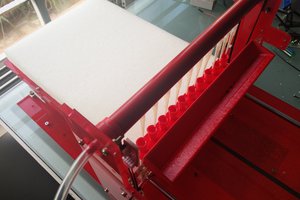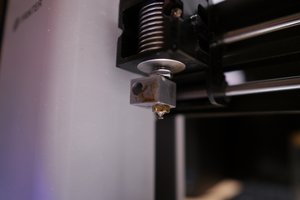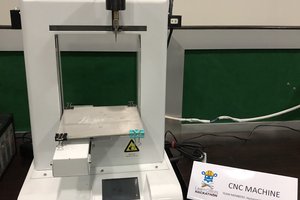The attached idea came to me today. I didn't see a comparable design online so I thought to get the idea out as fast as possible so it might spark further ideas.
Ideally any 3d printer could be cannibalized to build one in just a couple hours.
Because it is a square, pressure and volume limiters might be able to be simply done away with, as
Maximum pressure = (weight of top plate + additional weight) / (top plate area)
Volume = (top plate area) * (height of limit switch - height of stops)
both of which can be tabulated for a given build and attached to the machine.
Control would be with any 3D printer/CNC stepper motor (NEMA-17), 3d printer/CNC control board, and a microcontroller to simply send
G28 (home to limit switch)
M18 (disable stepper)
to inflate the bag and then allow the top plate to fall.
Legend for the flags in the attached image:
1. inlet check valve & standard hose fitting (3d printed adapter as needed)
2. outlet check valve & standard hose fitting (3d printed adapter as needed)
3. base and top plate made of easily sanitizible material such as delrin, nylon, or simply cover wood with plastic
4. gap space left behind bag to reduce wear on bag, if needed
5. Limit switch (adjustable height?)
6. NEMA-17 stepper motor with pulley type attachment
7. fishing line
8. additional weight if needed
9. bag (made of plastic sheeting and guerrilla tape? Held with tape or a simple clamp mechanism)
10. vertical rail made of dowel, or heavy gauge wire (coathanger?)
11. simple eye bolt screwed to top plate
12. hard stop (adjustable?)
13. 3D printed mount(s) for stepper motor
Outlet air can travel via standard medical hose to a 3d printed two-way valve at the face of the patient (already designed and in use in italy)
intake air can be humidified by bubbling through warm distilled water, mixed with oxygen via upstream regulator, and filtered as needed
As shown, I do not have prerequisite knowledge of inhalation sensors used to synchronize with patient breathing, but I am certain someone else in the community can add that functionality to a micro-controller. A rotary encoder could be used to set the frequency.
I looked around your jagl site but wasn't familiar enough to know where to post this.
Thanks for having a look, if there is somewhere being used for sharing of ideas like this let me know.

 JLAM
JLAM

 Sina Roughani
Sina Roughani